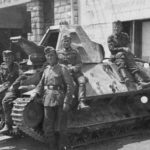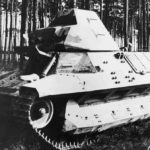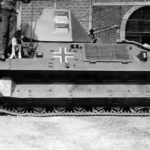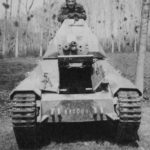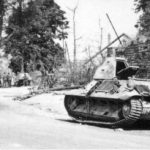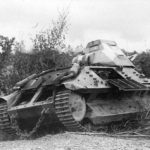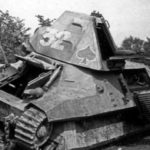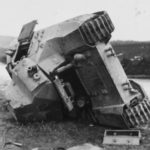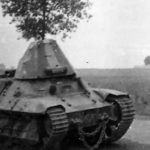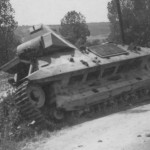Abandoned FCM 36
FCM 36 6
FCM 36 5
FCM 36 of the 7e BCC
Destroyed FCM 36 3
Abandoned FCM 36 1940
Char léger Modèle 1936 FCM
FCM 36 4
FCM 36 and B1 bis 1940
German FCM 36 Lutz – Panzerkampfwagen 737 FCM (f)
FCM 36 30098 from 4 BCC
French light tank FCM 36 of the 7 BCC
Char léger Modèle 1936 FCM 2
FCM 36 30067 “INCH’ALLAH” of the 4 BCC Voncq
FCM 36 7
FCM 36 30055 of the 7e BCC 2
FCM 36 of the 7e BCC 4 July 1939, Paris
French light infantry tank FCM 36 30009 named “Le Terrible” of the 7e BCC
FCM 36 30053 of the 7e BCC lying on its side, Chemery 1940
FCM 36 30087 of the 7e BCC white 32, Voncq 1940
FCM 36 30085 lying on its side, Chemery 1940
Char léger d’infanterie FCM 36
FCM36 knocked out during the French campaign, 1940
FCM 36 – details of the damaged turret
Tank FCM 36 number 53
French light infantry tank FCM 36 from 7e BCC
Abandoned FCM 36 tanks, France 1940
Light infantry tank FCM 36 30014 “Mon Tapadou” of the 7e BCC
Char leger Modele 1936 FCM 36 of the 7e BCC
FCM 36 light tank
FCM 36 tank named Fantome
Knocked out FCM 36 tank, number 30042 of the 4e BCC, Voncq 1940
French light tank FCM 36
wehrmacht soldiers next to a FCM36 tank
Knocked out tank FCM 36
FCM 36 tank 30018 of the 7e BCC
FCM 36 of the 7e BCC France 1940
light infantry tank FCM 36 number 51940
abandoned FCM 36 tank
Tank Char FCM 36, built by the Forges et Chantiers de la Méditerranée in 1936, was a 12 ton light infantry tank.
Armament: 37 mm L/21 gun and 7.5 mm MG.
In June 1934 French Army launched a competition for a light tank, the successor to the outdated tank Renault FT-17 derived from the First World War. Of the 14 projects army selected five. After testing prototypes tank weapons introduced Renault R-35, which was to become the new infantry support tank, replacing the FT-17. Interest in command of the infantry raised also another of the tested prototypes derived from plants Forges et Chantier de la Méditerranée (FCM).
FCM tank had a number of unusual solutions for the other French tanks. He had a welded hull of rolled plates, armor of innovative shape and was powered by a diesel engine. Tests of April 1935, where the winner was R-35, resulted in the rejection of the FCM tank due to problems with reliability, but recognized that it is worthwhile to continue work on this design. Therefore prototype of the FCM was sent back to the manufacturer with a list of recommended changes to the design. The modernized tank was again tested from September 1935 to May 1936. During testing, the tank drove 1009 km, with 478 km on the highway. Tests have shown the need for further amendments. Some of them are introduced on a regular basis, some after the trial. Until June 1936 before the Commision d’Infantry tank having carried out tests to check resistance to chemical weapons. Finally, in July 1936, it was considered that the tank meets the requirements of the military. Even before the verdict in May 1936 ordered 100 tanks, which received designate of Char léger Mlè. 1936 FCM.
Serial production started in December 1936. Tanks have been delivered to the recipient in the period from May 1938 to March 1939. Manufactured tanks went to the 4th and 7th Bataillon de Chars de combat. Each was equipped with 45 tanks. They took part in battles against the German army during the German attack in 1940, but no information on their effective use. A significant number (depending on the source from 37 to more than 50 pieces) fell into German hands. Captured tanks received designation Pz.Kpfw. FCM (f) and the registration number 737 (f). Since February 1943 they were converted into self-propelled 7.5 cm Pak40 Fahrgestell auf Pz.Kpfw. FCM (f) and 10.5 cm leFH (Sf) auf Geschützwagen FCM (f). These guns were used during the fighting with the British Army in the region of Caen in Normandy.
Total production: 100 tanks.
Specifications
crew | 2 |
hull armor | front: 40 mm, sides: 20-40 mm, rear: 20 mm, roof: 15 mm, bottom: 12 mm |
turret armor | front, sides, rear: 40 mm, top: 15 mm |
main armament | 37 mm SA18 L/21, 102 rounds |
secondary armament | 1 x 7,5 mm mitrailleuse Châtellerault modèle 1931, 2400 rounds |
combat (kg) | 12350 |
length (mm) | 4432 |
hull height (mm) | 1460 |
width (mm) | 2128 |
height (mm) | 2179 |
engine | Berliet-Ricardo 8400 cm3, diesel, 4 cylinder 94 hp |
fuel capacity (l) | 217 |
fuel consumption / 100 km (road / off road) | 100 l |
range (road km/ off-road km) | 225 / 140 |
max speed (road/ off-road km/h) | 24 / 12 |
ground clearance (mm) | 380 |
trench crossing (mm) | 1600 |
vertical obstacle (mm) | 700 |
climbing ability (degrees) | 22 |


